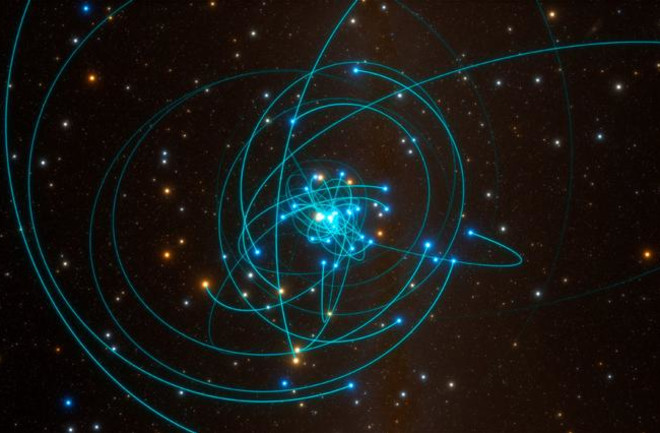Stars within the center of our home galaxy are constantly threatened by collision, as they orbit around the Milky Way's supermassive black hole, Sagittarius A (Sgr A). How close the stars are to Sgr A decides whether they crash into other nearby stars, stuck in a merging steadfast clash, or only lose their outer layer and keep hurtling into orbit.
"They whack into each other and keep going," said Sanaea Rose, study lead author and astrophysicist at Northwestern University, in a press release. "They just graze each other as though exchanging a very violent high-five. This causes the stars to eject some material and lose their outer layers."
Aside from understanding what happens to stars near each other, a new study could help astrophysicists learn more about the Milky Way galaxy, its past, and how its central star cluster changes over time. "At the very least, it certainly provides a point of contrast for the neighborhood where we live," said Rose in a statement.
Studying Striking Stars
For this new study, a research team looked at 1,000 stars in the star cluster near the Milky Way's supermassive black hole and simulated them orbiting around Sagittarius A (Sgr A).
The team also traced the paths and simulated these stars to understand their movements further. The simulation can track the star's mass, the density of a star cluster, the speed of stars' orbits, the pull gravity has on the stars, and the distance each star is from the supermassive black hole.
Read More: 7 of the Brightest Stars You Can See with the Naked Eye on Earth
What Happens When Stars Collide?
What happens to the star after it collides with another one depends on its structure, speed, proximity to the black hole, and what it hits. When the star hits another star in its path, it either merges with it and gains a solar mass or only loses some mass. In this case, no merge happens, and instead, the star zooming by gives another star a stellar 'high-five' (or hard slap) and loses some of its mass.
Using the simulation, Rose and her team found that what dictates what happens to an orbiting star is its distance from the black hole. Stars that orbit closer to the black hole within 0.01 parsecs most likely will crash and keep going only losing their outer layers.
Stars outside 0.01 parsecs from the black hole circle around at a slower stride but will merge with another star because it's too slow to escape. The result is an even bigger star. If this merging pattern continues, some stars can become 10 times bigger than the Sun. Aside from growing bigger, the stars also get a dose of youthfulness.
"A few stars win the collision lottery," Rose said in a press release. "Through collisions and mergers, these stars collect more hydrogen. Although they were formed from an older population, they masquerade as rejuvenated, young-looking stars. They are like zombie stars; they eat their neighbors."
While the stars become more prominent and appear younger, it's short-lived. Soon after, the stars die. Their large sizes eat away at their energy stores and burn through their collected masses.
Read More: How Do Black Holes Form?
Article Sources
Our writers at Discovermagazine.com use peer-reviewed studies and high-quality sources for our articles, and our editors review them for accuracy and trustworthiness. Review the sources used below for this article:
The Astrophysical Journal Letters. Collisional Shaping of Nuclear Star Cluster Density Profiles.

